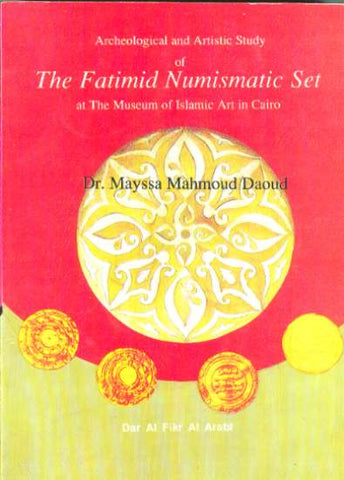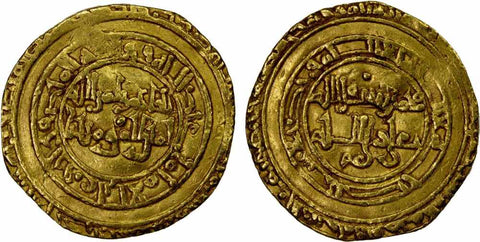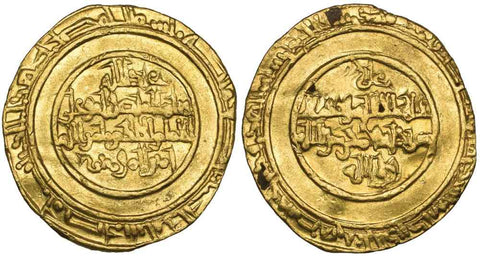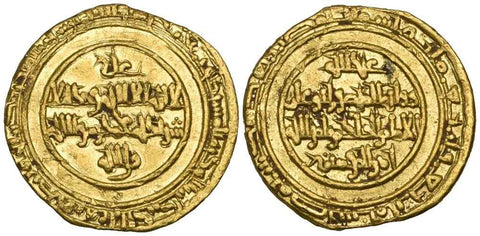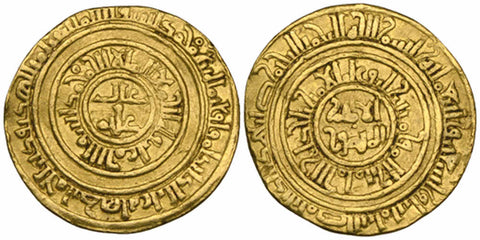Nice Islamic Silver Coin Mamluk Dirham 755-762 AH / 1354-1361 AD Second Reign of Al-Nasir Nasir al-Din Hasan
Description: A silver coin from the times of Al Nasir Nasir al-Din Hasan's second reign. Hasan was the son of Muhammad son of Qalaun and ruled Egypt and Syria for two different periods ranging from 748 AH (1347AD) and 762 AH (1361 AD). This coin is from his second reign which occurred in the period 755-762 AH / 1354-1361 AD. Al Nasir Hasan is from the Bahari Mamluk dynasty. This is a dirham weighing about 2.8 grams and is about 20 millimeters in diameter. It is in generally fine condition with readable calligraphy on the obverse and the reverse, but showing wear and areas of flatness. The obverse shows the legend "Al Sultan Al Malik Al Nasir Nasir al-Dunia; wa al-Din Hasan bin...." while the reverse has the legend ".. Elah Ela ..;Muhammad Rassul Alah.; Arsaluh Bil Hudah...." The small flan of the coin does not show either a mint or a date. However, the coin is similar to Balog 367, which is struck in Hamah. Please carefully review the scans presented as they are part and parcel of our description.
Date: Date off flan, struck in the period 755-762 AH (354-1361 AD).
Mint: Uncertain but possibly Hamah.
Size and Weight: This is a dirham, weighs ~2.8 grams of silver and is ~20 mm in diameter.
References: It is Album #945 with a scarcity rating of S, it is similar to Balog as #367, and is Wilkes1002.
Condition: I would grade this coin as a fine or better. The coin itself is much better than the photos show with relatively well defined and legible portions of the calligraphy on both the obverse and reverse. The coin shows wear and has strike weakness along the edges and definitely shows the name Hasan. A normally scarce coin, which is dificult to find and would make a nice addition to your collection. Please see the photos for additional condition information.
Historic Perspective: The word Mamluks in Arabic means "owned", hence their nickname "Slave Kings". They succeeded the Ayyubids and ruled Egypt and Syria for about 250 years. They had been recruited by the Ayyubids and then, like the Turkish mercenaries of the Abbasid caliphs, had usurped power from their enfeebled masters. Unlike their predecessors, however, they were able to maintain their power, and they retained control of Egypt until the Ottoman conquest in 1517. Militarily formidable, they were also the first power to defeat the Mongols in open combat in 1260, at Ayn Jalut near Nazareth in Palestine.
The Mamluk sultans are usually divided into two dynasties, the Bahris (1250 - 1382 AD), chiefly Turks and Mongols, and the Burjis (1382 - 1517 AD), chiefly Circassians. These names arise from the location of the barracks of the Mamluks within the city of Cairo (Al Kahira). Those originating from the barracks on an island in the Nile are Bahari (sea dwellers) and those who were in the towers of the Cairo Citadel are the Burjis (the tower dwellers). The Bahri sultans were usually selected from a few chief families, but during Burji times there was scant respect for hereditary principle in the selection of rulers. Neither dynasty was able to exercise more than a limited power over the turbulent Mamluk soldiers. The sultans reigned, on average, less than seven years and usually met violent ends. In spite of the dangers that threatened the sultans at home, they usually conducted a vigorous foreign policy. They defeated the last of the Crusaders and repulsed the Mongol invasion of Syria. At times they held all Palestine and Syria and the holy places of Arabia. Even after the Ottomans occupied Egypt they wheeled quite a bit of power until Mohammad Ali massacred the last of them at the Cairo Citadel in the early 1800's.

